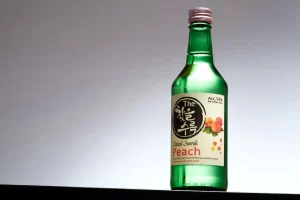What are you wearing right now? No, we don’t mean your fragrance or even your label. What types of fabric are you wearing?
Don’t know without looking at the tags? That’s okay. Most people have little to no clue what types of fabric are used to make the clothes they wear.
Let’s change that. While there’s no pressing need to know more about the fabrics we wear – unless we work in fashion or the textile industry – greater awareness can’t hurt either.
With this in mind, let’s take a look at seven common types of fabric used for clothing:
Cotton
Cotton is the most versatile fabric available for clothing manufacturing. As a result, roughly 75% of all clothing products worldwide are made from cotton. A natural fiber that is both soft and breathable, cotton is also very cost-effective. From dresses to t-shirts to undergarments, cotton is used for virtually all types of clothing. Cotton is also hypoallergenic, making it a safe fabric for those with sensitive skin. The downsides to cotton are that colors fade faster than they do with other fabrics, and natural fibers degrade faster than others.
Denim
A highly processed form of cotton, denim consists of warp-faced cotton twill woven with dyed yarn. While denim is best known as the fabric used to make jeans, denim is also used to make hats, jackets, and shirts. The various dyes used in the denim weaving process allow for a variety of different colors and shades, while the durability of the final product lends itself to any number of alterations, cuts, and distressing.
Linen
A lightweight fabric renowned for its breathability, linen is made from the fibers of the flax plant. Linen is absorbent while also being quick to dry, making it a suitable fabric for hot and humid climates. While women’s linen clothing showcases the delicate look and feel of this type of fabric, linen is surprisingly durable for how light it looks and feels. As a result, linen clothes last for years when properly cared for and cleaned.
Polyester
Polyester is a synthetic fabric derived from petroleum, known for its resistance to wrinkles and for maintaining its size and shape over time. Polyester’s versatility makes it suitable for various clothing items, including blouses, dresses, jackets, and pants. Polyester is also easy to care for, making it practical for situations where low-maintenance clothing is ideal. The downside to polyester is its propensity for pilling, peeling, and pulling over time.
Rayon
While it sounds like a fictional material found in science fiction, rayon’s origins are anything but off-world. Though synthetic, rayon is made from wood pulp or cotton, making it breathable, soft, and subsequently suitable for warm weather. Rayon is commonly used to make blouses, dresses, and lightweight shirts but is also used to imitate linen, silk, and other natural fabrics.
Silk
Once one of the planet’s most precious and prized materials, silk is no longer a Chinese state secret but remains one of the most luxurious fabrics used to make clothing. Made from the cocoons of silkworms, silk is commonly used for high-end dresses, luxury loungewear, and sleepwear. Despite its density, silk is very breathable and lightweight, making it ideal for spring and summer.
Wool
Derived from the fleece of sheep and other mammals, wool is a warm and durable fabric frequently worn in cold weather. As a result, wool is commonly used to make coats, scarves, and sweaters. Renowned for its natural moisture-wicking properties, wool is also worn during inclement weather and can be a reliable option for those planning to spend significant amounts of time outside.
We rarely take into account the fabric used to make the clothes we wear. However, each type of fabric commonly used to make clothes has its own pros and cons. What’s more, different fabric types have their own characteristics and uses in the fashion world. While a failure to identify different fabrics is unlikely to cause most people any significant hassle, it pays to know a thing or two about clothing fabric in order to make smarter clothes-buying decisions and better fashion choices going forward.
Alex Farina is a freelance writer from Ohio. He enjoys writing about design, fashion, nature, and technology.




